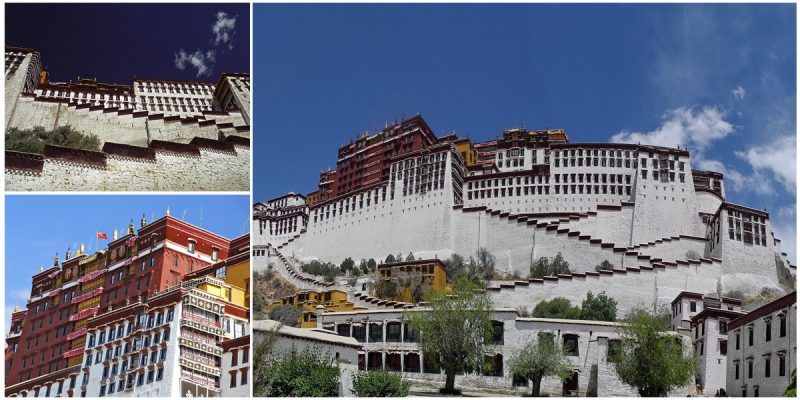The Potala Palace, located in the Lhasa valley, is the greatest monument in Tibet. It was the home of the Dalai Lama until the 14th Dalai Lama, who had to leave Tibet in 1959 because of the Tibetan uprising. According to the Guinness Book of Records, it is the highest palace in the world.
The name Potala comes from Mount Potalaka, which was the abode of the Bodhisattva Chenrezig, or Avalokiteshvara. The construction was started by the 5th Dalai Lama in 1654 when Konchog Chophel, one of the Lama’s spiritual advisers, pointed out the site as an ideal place for a government.
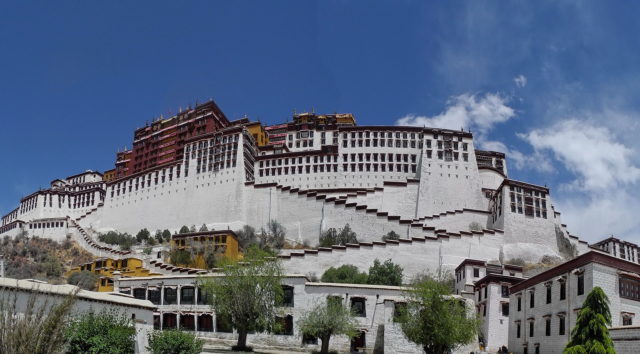
This giant palace includes many houses, chapels, galleries, and towers and many consider it one of the most beautiful buildings in the world. It was built on the site of a former palace, placed on the Red Hill by Songtsan Gampo.
Two remaining chapels of the original building can be seen on the northwest corner of the new palace. The first one is known as the Phakpa Lhakhang, and the second, which is more popular, is Chogyel Drupuk, the meditation cave of Songstan Gampo.
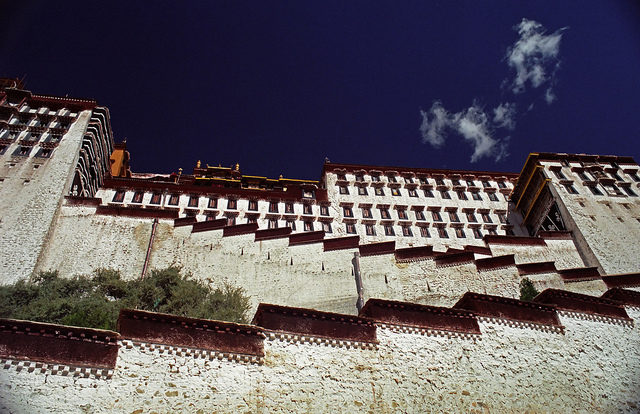
The outer part of the building was finished in three years, but the interior took 45 years to complete. The building does not look much like a palace when it’s seen from the outside. Built at an altitude of 12,100 feet on the Red Mountain in the heart of Lhasa Valley, the palace has flat roofs with many windows, and it looks like a rather ordinary, if large, building. The real palace is hidden inside, behind the walls where there are so many colors.
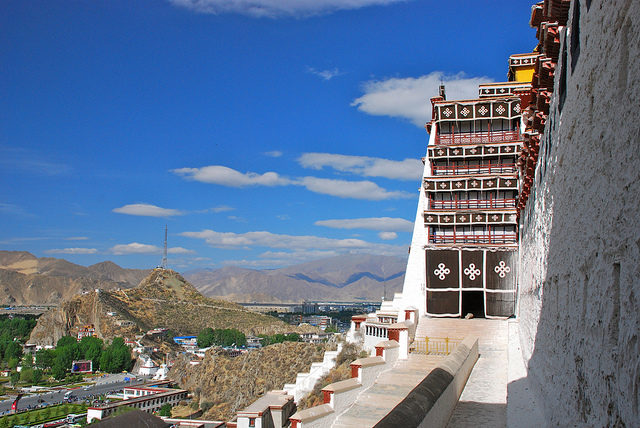
The building is divided into two parts, the front part is called the Red Palace, and the other building is the White Palace. On the ground floor of the White Palace is the ceremonial hall which contains the throne of the Dalai Lama, and on the upper level are his private rooms.
This magnificent structure includes 10,000 painted scrolls, 698 beautifully made murals, many carpets, fine objects, curtains in amazing colors, and numerous sculptures. There is a central courtyard painted in yellow that separates the living quarters of the Lama and the monks from the Red Palace called Deyangshar.
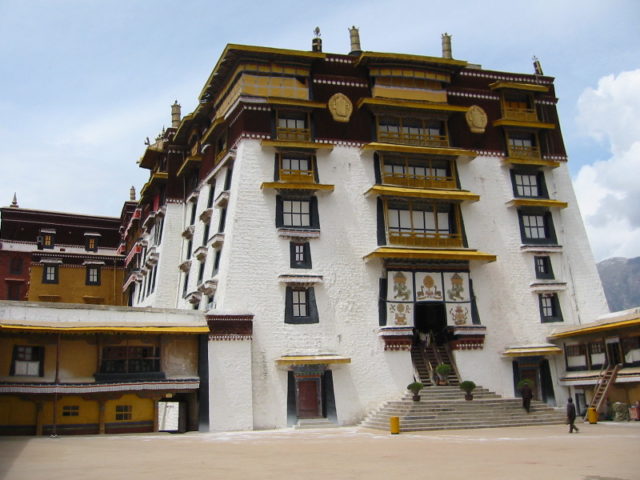
The Red Palace is entirely devoted to spiritual study and prayer. It has various chapels, libraries, galleries, and halls and is one of the most peaceful places in the country. Inside is the Great West Hall, which has four chapels dedicated to the 5th Dalai Lama. It is filled with many murals, beautiful Persian miniatures that depict scenes from the glorious life of the Lama. On its north side is the Saint Chapel, which dates from the 7th century. Inside, there is a small jewel that represents a statue of Avalokiteshvara and two of his associates.
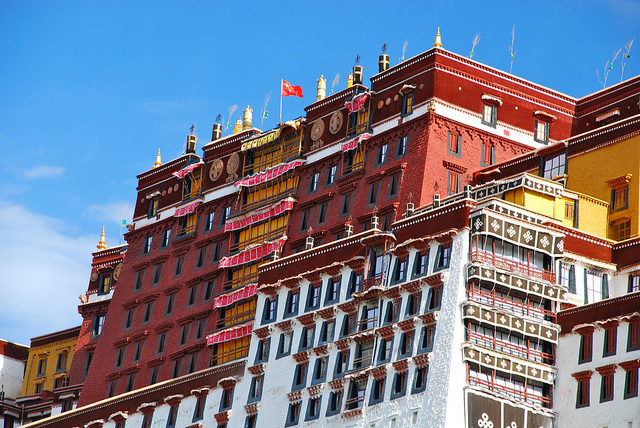
Another important and fascinating chapel is the North Chapel in which can be found the gold Stupa-tomb of the 11th Dalai Lama, who died very young. The South Chapel is dedicated to Padmasambhava, who was an Indian saint and magician from the 8th century, and the East Chapel is devoted to the founder of the Goplag tradition, Tsong Koopa.
And the last, the West Chapel, contains the five golden stupas of which the central one contains the mummified body of the 5th Dalai Lama.
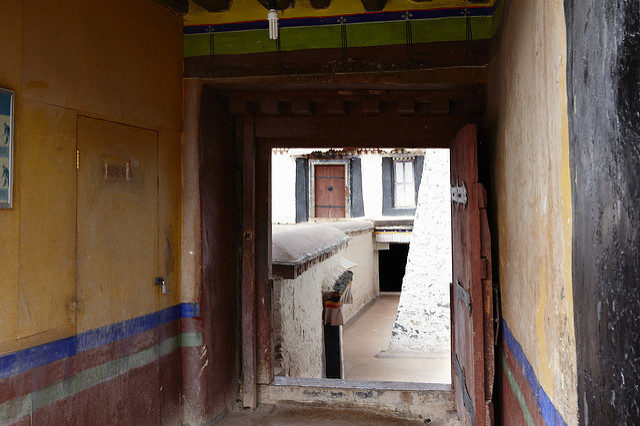
Besides the chapels, there are also remarkable galleries as mentioned and the first one is above the West Chapel. The Second Gallery is an entrance to the central pavilion that is used for visitors. There they can buy refreshments and various souvenirs. The Third Gallery is different from the others, two which are light and with many windows, because its dark rooms contain collections of bronze statues.
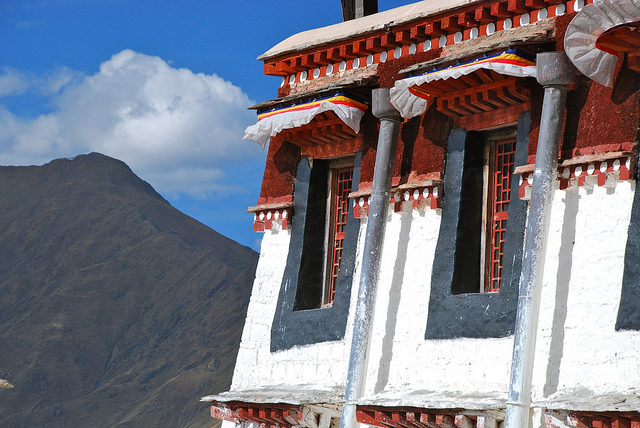
One of the most important and spiritually visited places is the tomb of the 13th Dalai Lama, which is located on the west side of the Great West Hall.
The tomb can be reached only with the guidance of a monk, and the entrance is from an upper floor. The giant stupa was built in 1933 and is 46 feet high. Today, the Potala Palace is a UNESCO World Heritage Site and is open to the public.
